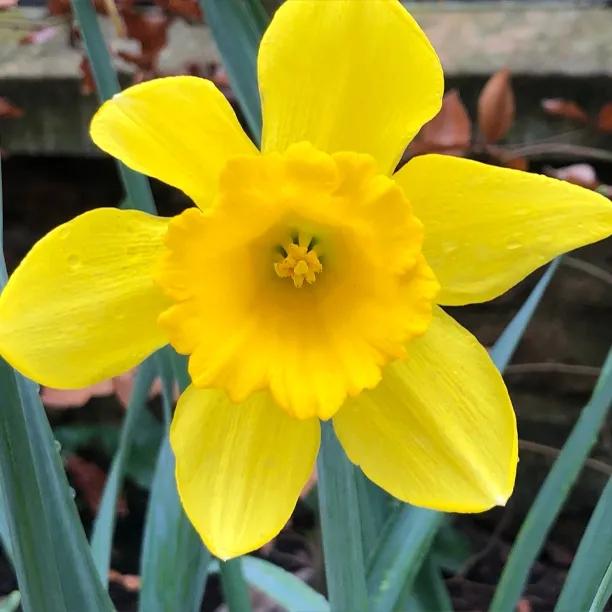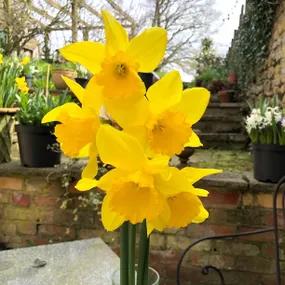'Gigantic Star' Daffodil Bulbs
Honest Delivery Prices- Group 2: Large-cupped Daffodil
- Colour: Saffron yellow
- Height: 40 cm
- Scent: Hint of vanilla
- Flowering: March/April
- Planting Depth: 10-15 cm
- Planting Months: September - November
Recommended extras
Description
Gigantic Star Daffodils
Gigantic Star is a lovely, traditional Daffodil that naturalises well and will please you for many springs to come. The name tells no lies; this is a big, strong daffodil, with a flower that is golden yellow where the very slightly paler, perianth surrounds a flaring cup that is a touch darker. The difference is barely noticeable, especially in partial shade but it adds a subtle depth to the flower in full sunlight. In flower from March to April, don't forget to stoop down occasionally and smell its lovely vanilla scent. Mix up Gigantic Star with other daffodils and narcissi to achieve different heights and colours. For more of a contrast, it is stunning planted with our blue grape hyacinths (Muscarii armeniacum).
Golden paving
Take advantage of these vast, golden flowers by planting them where they can spread. As great naturalisers, they are wonderful at taking over a patch of land and in a couple of years, it will really look like your garden is paved with gold. Being so large, they make an excellent cut flower and save you hours of picking time because you only have to pick a few and you have a handful! Gigantic star performs well in containers but watch your proportions and provide them with a suitably gigantic pot.
Features
- Group 2: Large-cupped Daffodil
- Colour: Golden yellow
- Height: 35-40 cm
- Scent: None
- Flowering: March/April
- Planting Depth: 10-15 cm (can be a little more in grass and sandy soils)
- Planting Months: September - November
Did You Know?
The Romans brought daffs to Blighty believing that they had healing properties. In fact the sap contains skin irritants, but then wasn't it the Romans who whipped themselves with nettles?
Planting Instructions
Gigantic Starb can be planted in borders, containers and grass where it naturalises well. In pots, keep them cool as excess heat kills the flower buds.
Daffodils and Narcissi prefer neutral to alkalineb soil in full sun that is well-drained, fertile and retains some moisture while the bulb is growing. Plant about 10-15 cm deep. In grass and sandy soils, you can go a bit deeper.
Water in dry spring weather; late flowering narcissi and daffodils will not flower if they are too dry. Dead-head as the flowers begin to fade, and let the foliage die back naturally for 6-8 weeks before mowing.
You can use a high potash fertiliser in the growing season to help the bulb for next year. Lift and divide clumps if flowering is poor.
b b


